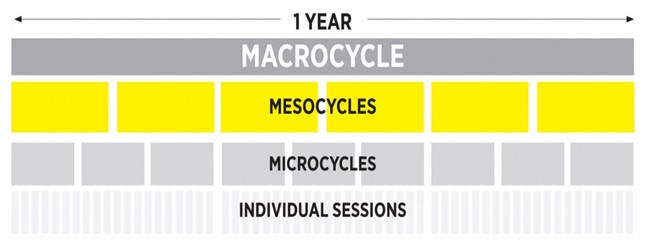Periodisation
Mesocycles and microcycles
The development of a training plan for a player is one of the main roles of a strength and conditioning coach. Periodisation is a programme management and planning method which uses a logical manipulation and sequencing of training variables to bring about the optimal adaptation in the player. There are several differing definitions of Periodisation, but one simple, easy to understand definition is Periodisation is a method by which training is divided into smaller, easy to manage segments. These smaller segments are called microcycles and mesocycles.
A microcycle is usually a week-long block of training containing all the individual training sessions that are planned in the week. It is a key structural component of any training programme as the training conducted on a daily and weekly basis determines the outcomes of the overall plan. The structure and training content of a microcycle depends on the training objective and thus the training phase. The microcycle must be flexible, as often the coach will have to adapt the session plan during the week.
A mesocycle is a longer duration training block usually lasting for 2-8 weeks. The mesocycle contains multiple microcycles as Figure 1. below highlights. The design and training structure of the microcycles or weeks that are grouped within a mesocycle will determine the mesocycle’s training objective. For example, there could be a strength or a muscle building mesocycle in which the training done in the individual microcycles is geared towards that overall mesocycle aim. It is common for some coaches to utilise Mesocycles lasting 4 weeks to reflect a monthly planning process. Planning microcycles and mesocycles allows the coach to focus on achieving specific training outcomes.
Figure 1. Yearlong training structure
